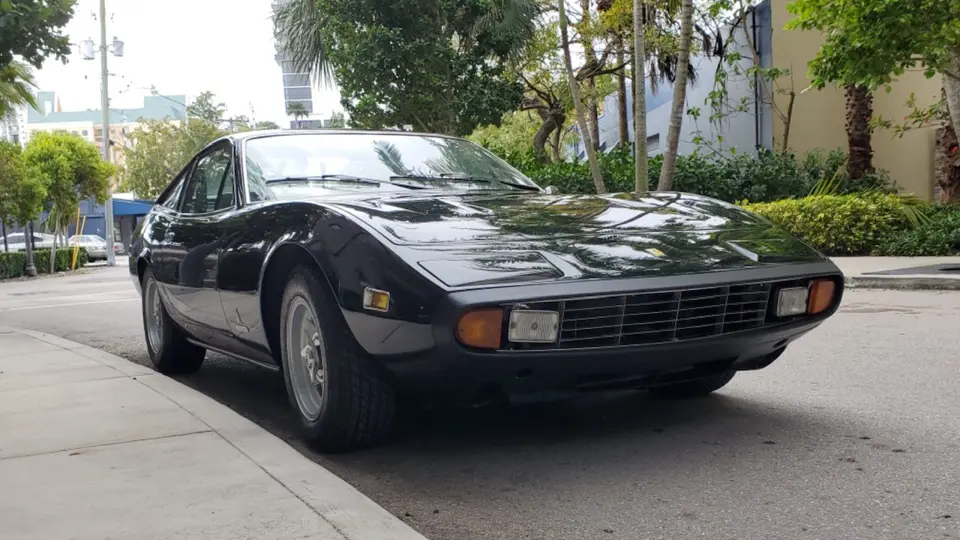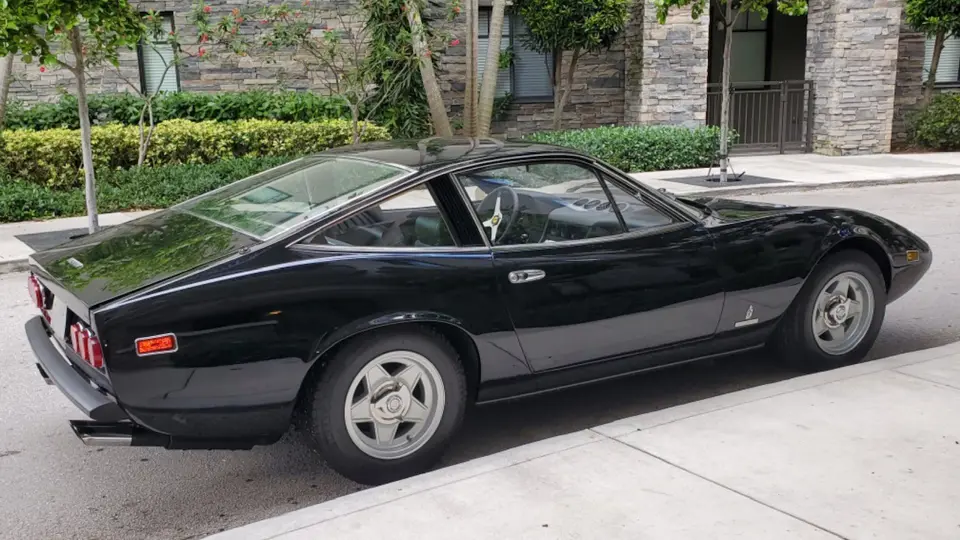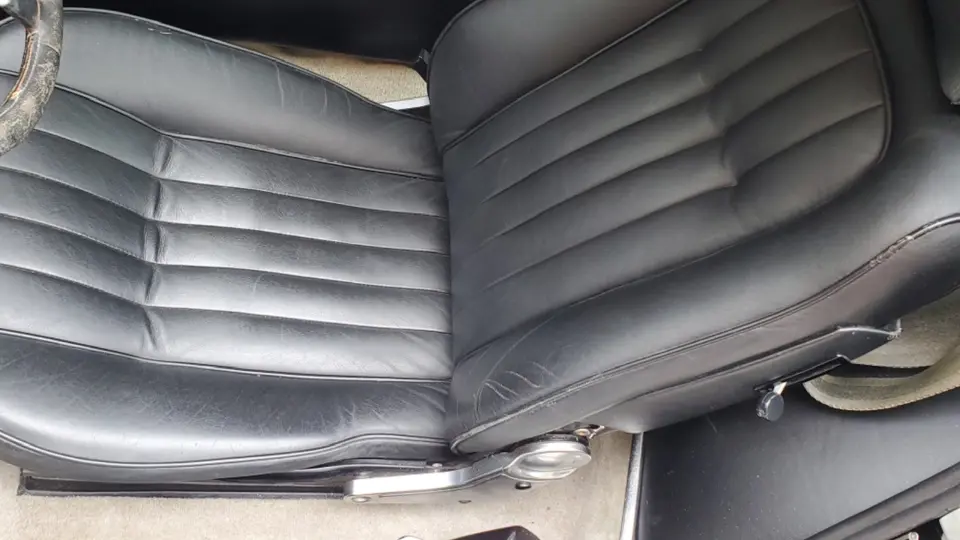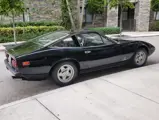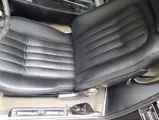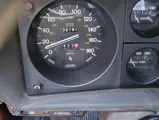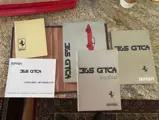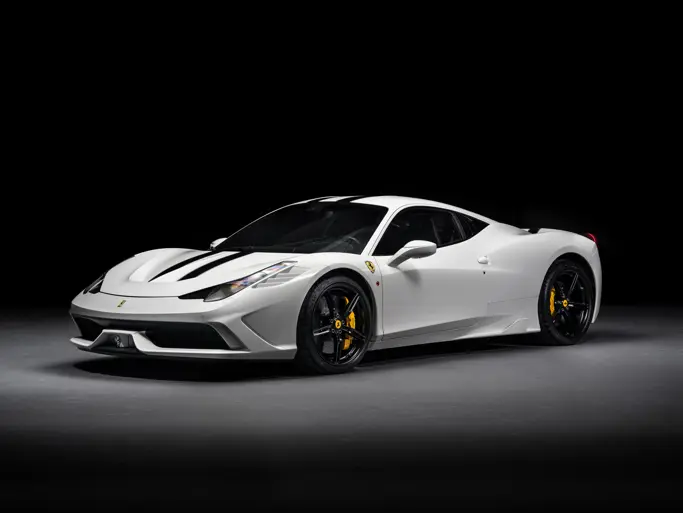
1972 Ferrari 365 GTC/4 by Pininfarina
{{lr.item.text}}
$275,000 - $300,000 USD | Not Sold
{{bidding.lot.reserveStatusFormatted}}
- Number 401 of only 500 produced over 18 months
- A well-documented example, formerly of the William H. Tilley collection
- Refinished under previous ownership in black with a replacement black leather interior
- Includes factory manuals, service invoices, and a report by marque historian Marcel Massini
Penned by Filippo Sapino of Pininfarina, the 365 GTC/4 marked a sharp change in design ideology for Ferrari when it debuted at the 1971 Geneva Motor Show. Its wedge shape with pop-up headlights was a significant departure from the outgoing 365 GTC’s more traditional profile featuring the classic round headlights. Proportioned like a two-seater coupe, the body was mostly steel, with the hood and trunk lid made of lighter aluminum. Clever use of interior space allowed for the inclusion of two fold-down, rear seats, though they were more suited to carrying luggage or children than adults. Thus, although the new GTC/4 effectively replaced two models—the 365 GTC and 365 GT 2+2—it was not quite an equivalent replacement for the larger 2+2 model, which ceased production in 1971.
Both in design and performance, the new 365 GTC/4 was more subdued than the aggressive 365 GTB/4, its two-seater contemporary whose chassis it shared. Though still high-revving, its 4.4-liter V-12 engine—the “4” in GTC/4 designating quad overhead camshafts—was slightly detuned and less high-strung by comparison, making it torquier and more tractable at lower speeds. The engine also lacked the dry-sump lubrication system of its race-bred GTB/4 counterpart, while the carburetors were side-draft rather than down-draft, to accommodate the lower hood line. Meanwhile, the suspension was also softer than that of the GTB/4, and creature comforts like power steering, power windows, and air conditioning came standard, along with a five-speed manual transmission, four-wheel disc brakes, and self-leveling hydraulic shock absorbers at the rear. Boasting a top speed of 163 mph, the GTC/4 was not only comfortable but quick, carrying on the well-established tradition of imminently capable Ferrari grand tourers. A lengthened version of the 365 GTC/4 chassis would underpin the succeeding 365 GTC 2+2.
Notable for being the first new 12-cylinder to launch after Fiat announced in 1969 that it would assume control of Ferrari road-car production, the GTC/4 was available from the outset in Europe and the United States. With an uncharacteristically short production run of less than two years, Ferrari produced only 500 models, the bulk of which were sold in the United States. U.S.-specification cars are visually distinguished by their rectangular side-markers and chromed, center-lock wheel nuts in place of knock-off spinners.
This U.S.-specification 365 GTC/4 was completed in July 1972. It left the factory finished in Grigio Argento over Nero Cogolo and equipped with air conditioning, power windows, and provision for a radio, according to a report by marque historian Marcel Massini. It was delivered new in August 1972 to Modern Classic Motors in Reno, Nevada—the West Coast Ferrari distributorship owned by hotel and casino magnate William F. Harrah. Subsequently registered to an owner in Los Alamitos, California in 1975, the car was resprayed to its current black livery at some point prior to entering the collection of William H. Tilley in 1990. It would remain in Mr. Tilley’s collection until his passing in 2013, after which it was sold at the RM Sotheby’s auction in Monterey, California that same year. In September 2014, the car was offered for sale through Driversource in Houston, Texas.
The well-appointed interior appears to have been reupholstered in black leather under previous ownership and a parcel shelf appears in place of the rear seats typically present on the 365 GTC/4. While the car did come equipped from the factory with air conditioning, an aftermarket unit was previously retrofitted, as was a Clarion in-dash stereo CD player. The car rides on factory-style, star-pattern alloy wheels with knock-off spinners. A service invoice from Scuderia Performante of Malvern, Pennsylvania indicates that the exhaust system was replaced in January of 2016. Included with the sale are multiple Massini reports, service invoices, and manuals.




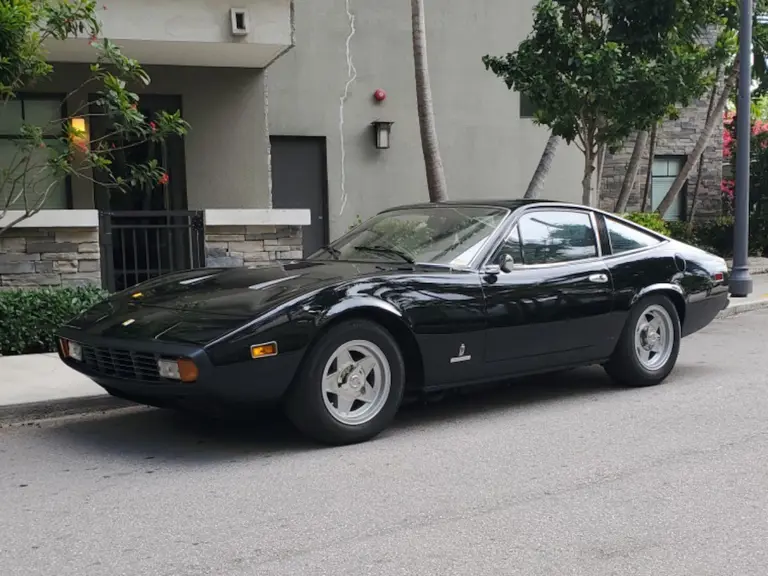

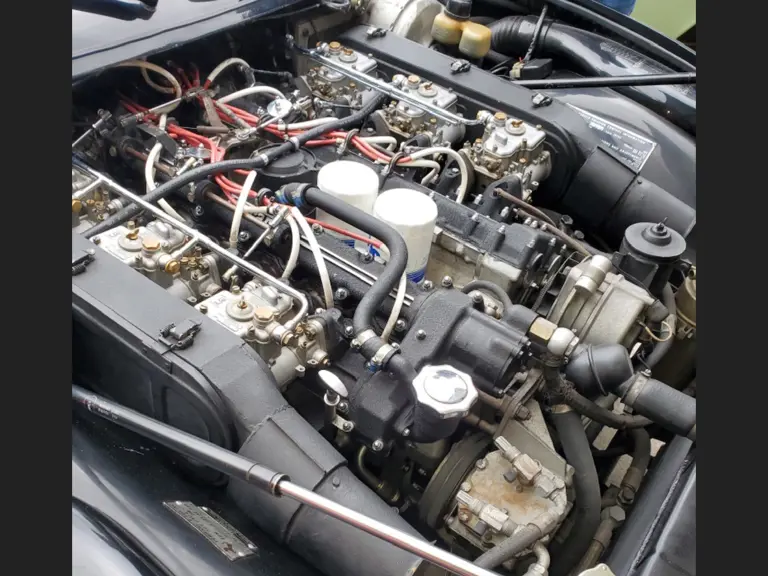
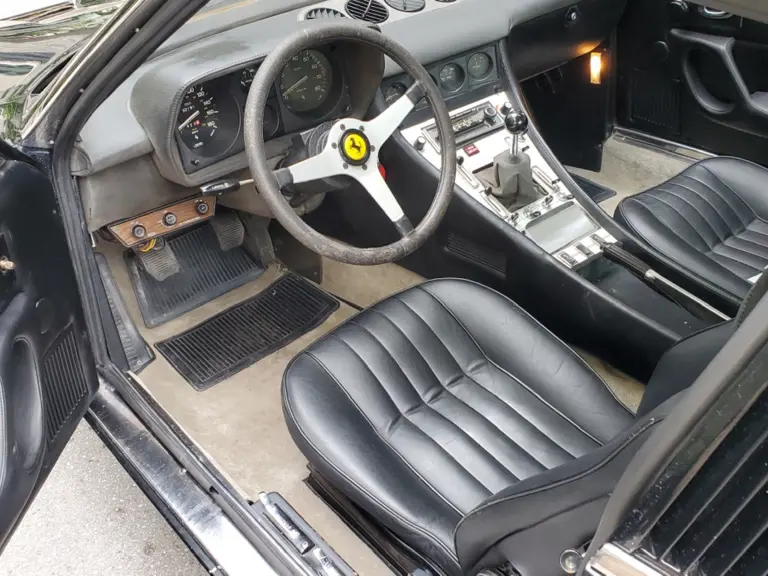
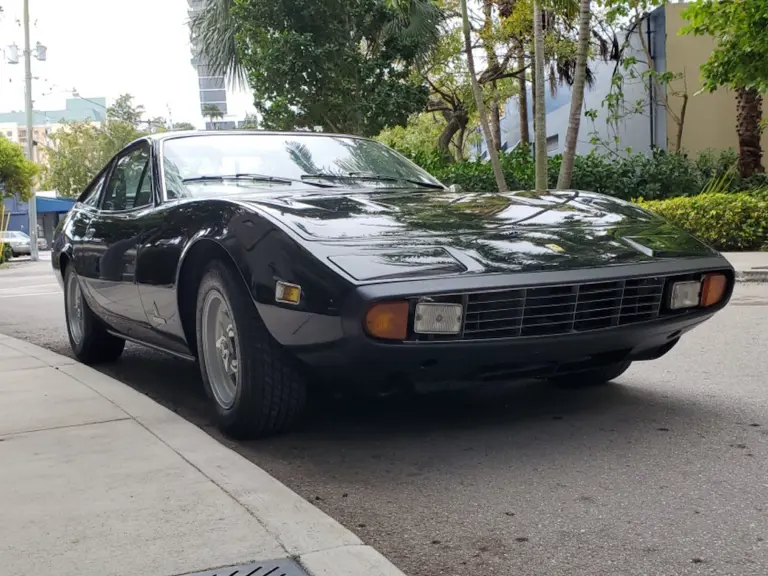
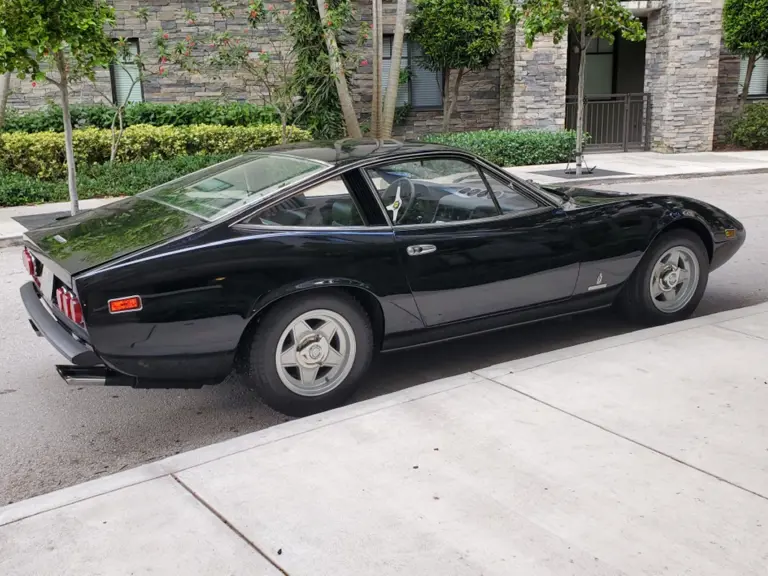
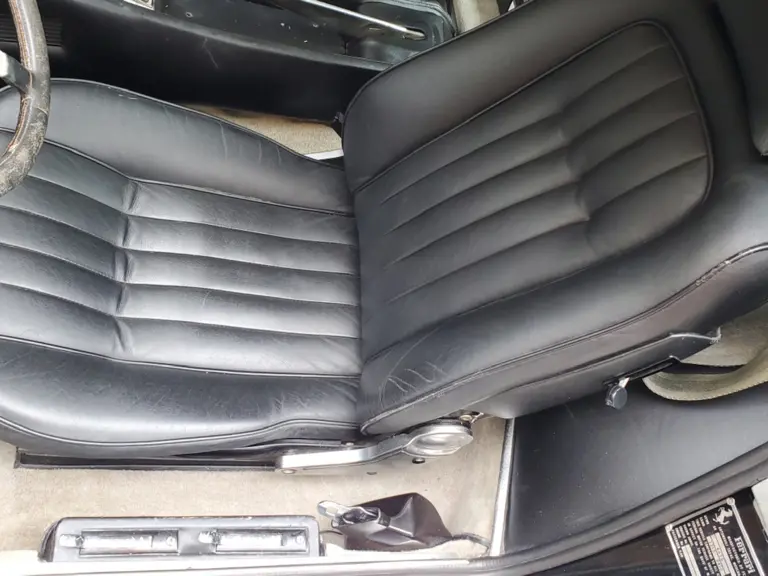
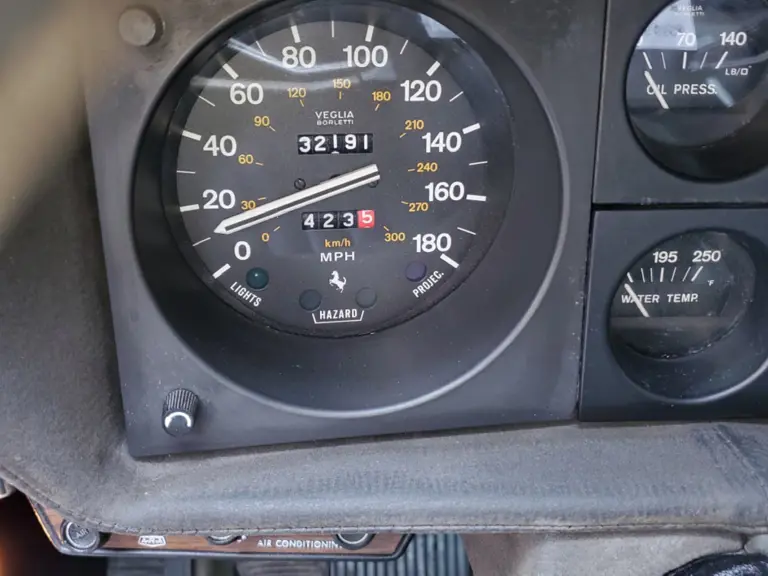
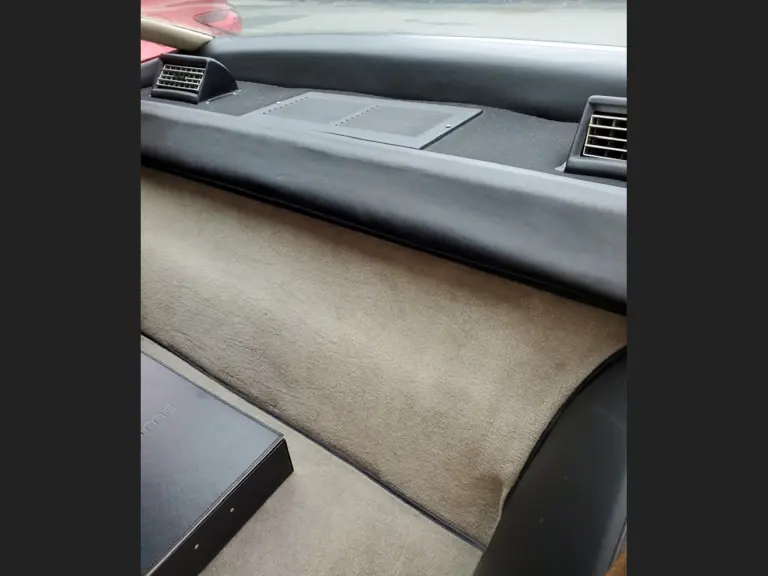
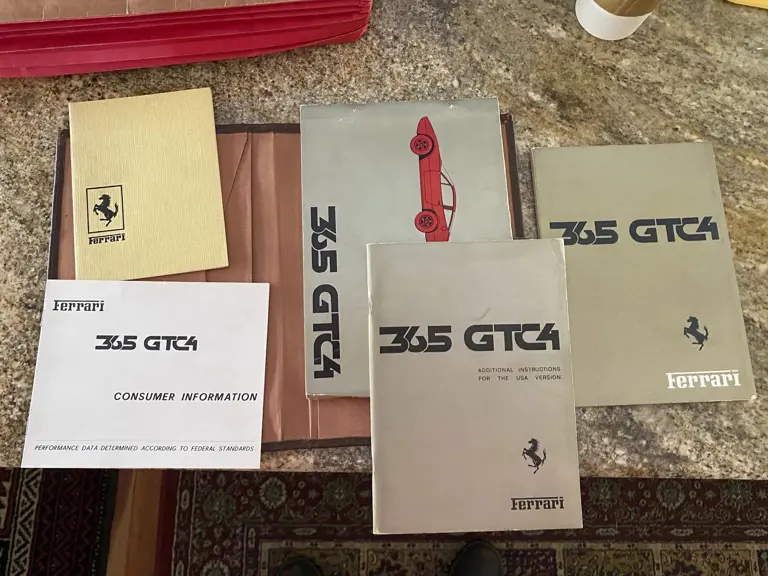
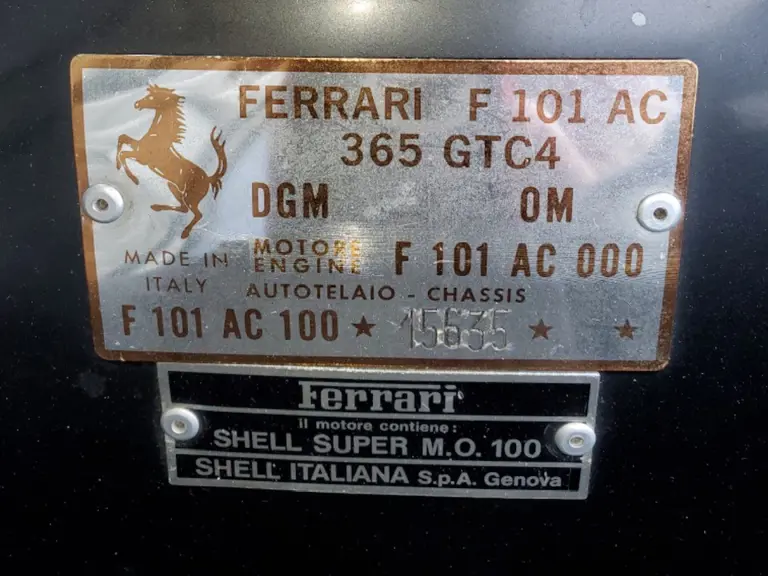
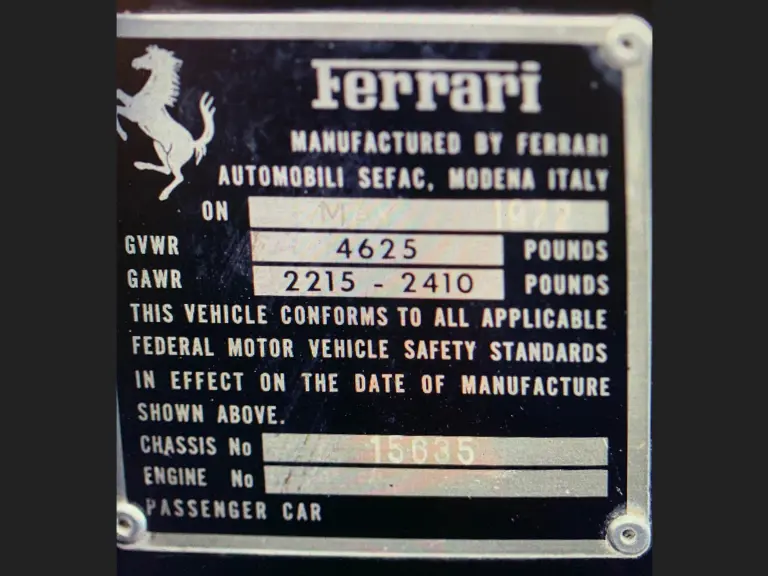
 | Fort Lauderdale, Florida
| Fort Lauderdale, Florida
